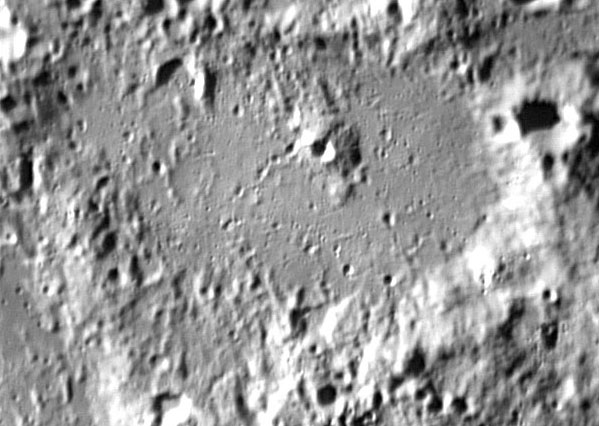Difference between revisions of "August 30, 2004"
| (4 intermediate revisions by the same user not shown) | |||
| Line 1: | Line 1: | ||
__NOTOC__ | __NOTOC__ | ||
=Are Central Peaks Volcanoes?= | =Are Central Peaks Volcanoes?= | ||
| + | <!-- Start of content --> | ||
<br> | <br> | ||
<table width="85%" border="0" align="center" cellpadding="6" cellspacing="2"> | <table width="85%" border="0" align="center" cellpadding="6" cellspacing="2"> | ||
| Line 11: | Line 12: | ||
<table width="80%" border="0" align="center" cellpadding="8"> | <table width="80%" border="0" align="center" cellpadding="8"> | ||
<tr> | <tr> | ||
| − | <td><div align="center" class="main_sm"> | + | <td><div align="center" class="main_sm"> |
| + | Image Credit: [mailto:Bruno.DAVERSIN@lahague.com Bruno Daversin ] | ||
| + | </div></td> | ||
</tr> | </tr> | ||
</table> | </table> | ||
| Line 25: | Line 28: | ||
Image obtained with Ludiver Observatory (Normandy, France) 600 mm (24") F/D=16 cassegrain telescope + infrared filter + BxW webcam + infrared filter; 100 frames processed for each picture.</p> | Image obtained with Ludiver Observatory (Normandy, France) 600 mm (24") F/D=16 cassegrain telescope + infrared filter + BxW webcam + infrared filter; 100 frames processed for each picture.</p> | ||
<p><b>Related Links: </b><br> | <p><b>Related Links: </b><br> | ||
| − | [ | + | [http://www.lpi.usra.edu/research/lunar_orbiter/images/img/iv_107_h3.jpg Lunar Orbiter IV View] </p> |
| − | <p><b>Tomorrow's LPOD:</b> Archimedes and his Mountains</p> | + | <p><b>Yesterday's LPOD:</b> [[August 29, 2004|X Marks the Spot]] </p> |
| + | <p><b>Tomorrow's LPOD:</b> [[August 31, 2004|Archimedes and his Mountains]] </p> | ||
</tr> | </tr> | ||
</table> | </table> | ||
| Line 44: | Line 48: | ||
<!-- Cleanup of credits --> | <!-- Cleanup of credits --> | ||
<!-- Cleanup of credits --> | <!-- Cleanup of credits --> | ||
| − | < | + | <!-- Cleanup of credits --> |
| − | + | <!-- Cleanup of credits --> | |
| − | + | {{wiki/ArticleFooter}} | |
| − | |||
| − | ---- | ||
| − | |||
| − | |||
| − | |||
| − | <!-- | ||
| − | |||
| − | --> | ||
| − | |||
| − | |||
| − | |||
| − | |||
| − | |||
Latest revision as of 14:36, 15 March 2015
Are Central Peaks Volcanoes?
Image Credit: Bruno Daversin |
|
Are Central Peaks Volcanoes? Although Ralph Baldwin in his 1949 book, The Face of the Moon, solved the problem of the origin of lunar craters, there continued to be a number of mostly European observers who vociferously argued that craters were volcanoes. That theory had a long pedigree, including Hooke, Nasymth, Gilbert, Wilkins, Moore and many other observers (who didn't know of the existence of impact craters). The volcanist believed that the central peak of Regiomontanus was irrefutable evidence of volcanism, for the peak was topped with a crater that no one could believe was a random impact. But it is. Daversin's exsquite image shows that the central peak crater, 5.5 km wide Regiomatanus A, is not centered on the peak as sometimes claimed, and that the crater is younger looking than its host mountain. The real reason we doubt that the peak is volcanic is that we understand how impact craters form. Part of the process is the rebound of the highly compressed ground zero of the impact target. This rebound lifts up rocks from deep below the crater. Such stratigraphically deeper rocks have been mapped in terrestrial impacts and identified in lunar peaks using multi-spectral data. There are some volcanic craters on the Moon, but almost all are tiny pits too small to be seen from Earth. Technical Details: Related Links: Yesterday's LPOD: X Marks the Spot Tomorrow's LPOD: Archimedes and his Mountains |
Author & Editor: COMMENTS?Register, Log in, and join in the comments.
|




